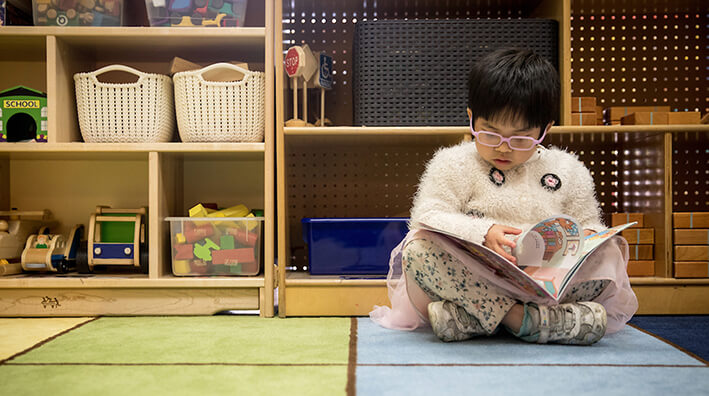How To Use This Resource
What am I reading?
The Language Playbook you are reading is designed to help Head Start staff have better, more effective conversations about our mission with the public. Though the people you speak with may have varying degrees of experience with Head Start, the following recommendations and “words that work” are designed to resonate with the broadest possible audience. Whether you’re talking to a parent or a policymaker, we hope you’ll find the tips in this book helpful.
Where did the recommendations come from?
These recommendations are based on messaging research with Head Start practitioners. The research sessions were conducted in Spring 2018 with staff from a range of backgrounds, roles, tenure, and geographic regions. The goal of the messaging research was to hear how we talk about our mission today, and understand what obstacles or misperceptions we face when talking to the public.
How do I use this Playbook?
That part is up to you! The Playbook is intended to be a resource for you whenever you are communicating about Head Start’s mission—who we are, and what we do. At the end of this document, we’ve included a summary of key words that work and words that don’t work, for when you need a quick reference guide.
You will see a series of call-out icons throughout:
Belitting Alert: Language that sounds like we’re talking down to someone, or like we’re taking too much credit
Buzzword Alert: Language that may be familiar within Head Start, but confusing to others
Alienating Alert: Language that is inherently negative and isolating, and could be replaced with something more positive


“We used the Playbook at a training for our Head Start parent advocates prior to legislative visits in our state capital. The Playbook helped facilitate discussions and role modeling conversations between directors and parents so everyone could feel more comfortable talking with lawmakers in the following days.”
–Mark Lackey, CCS Early Learning, Alaska
The Communication Context
If we had to sum up this Playbook in one sentence, it would be: as we communicate about Head Start, what our audience believes matters. It’s important to consider the ideas, questions, and perceptions someone brings to the table as they hear from Head Start. How much do they know about what we do? Is there something we can say that might surprise them? When we put ourselves in our audience’s shoes, we’re that much more effective. And the better we communicate our message with our audience’s truth in mind, the more we can tell a clear story that represents all that Head Start does.
In our messaging research, we heard from Head Start practitioners that there are strengths of Head Start some people aren’t aware of. There are also misperceptions and questions many of us have heard time and time again. When we adjust the words and phrases we use, we strike a chord with more people in more ways.
Findings Snapshot
What We Heard in the Spring 2018 Messaging Research
Every person’s approach to talking about Head Start and every person’s experience is a bit different. But we were struck by the commonalities we heard in the 2018 messaging research. Across roles, perspectives, and regions we heard many similarities about the strengths of Head Start that matter to us as a community, and areas of skepticism we address. The next two pages are a brief look at themes we heard for each of those topics.
Strengths We Want to Highlight
Our Comprehensive Approach
We’re not just working with children—we’re also working with parents and communities. On top of that, many members of the public aren’t aware that our process is individualized for each child, family, and community.
“The thing I love is that it’s not a prescriptive process that says you have to follow this trajectory. It changes and morphs and each child gets individualized, comprehensive services from start to finish.”
–Head Start Practitioner
Our Inclusive, Supportive Mindset
We have a deep respect for each child, parent, and teacher we support. Our role isn’t to swoop in and lead— it’s to serve as a supportive partner.
“We take families where they are. Not where any of us think they should be.”
–Head Start Practitioner
Our Commitment to Continuous Improvement
We are constantly learning from each other, and bringing the best ideas forward to make every Head Start classroom even more robust.
“It’s not just that we’re always learning; we’re learning to respond. Whatever collaboration we do is geared to be able to respond to where we are, and the needs of our current society. We’re flexible.”
–Head Start Practitioner
Our Focus on the “Whole Child”
We’re not just teaching children the basics of early education to prepare them for school. We’re teaching them the basics to prepare them for life.
“For me, that’s the difference between an average state Pre-K program and Head Start. Most programs are not focusing on the whole child.”
–Head Start Practitioner
Skepticism We May Encounter
Isn’t Head Start Daycare?
With low familiarity about our comprehensive approach comes confusion about the exact role Head Start plays.
“In our area, the educators in the community understand. The school district and college understand. But for everyday people in town, their perception is that Head Start is for daycare, not an education set-up.”
–Head Start Practitioner
Isn’t Head Start A Poverty Program?
Head Start has continued to evolve since our founding, and we partner with families from a range of backgrounds. Sometimes our evolution isn’t widely recognized. And sometimes, there are just stigmas, plain and simple.
“Everyone filters Head Start through their stereotypes of low-income people.”
–Head Start Practitioner
“I am so tired of talking to people who think Head Start parents are tired or lazy or don’t want to go to work. 60% of parents at our center are working.”
–Head Start Practitioner
How Effective is Head Start Long-Term?
Every day, we see the positive impact our work has for families and communities. But we sometimes face questions about how that impact carries over into the future.
“People very much connect things to the old, flawed research. We have a bunch of people who will pop up and say ‘Well, we heard that Head Start doesn’t work.’ I just had to get better at learning or understanding the research, saying this is what has now come out, to change that perception.”
–Head Start Practitioner
We’ll explore questions and skepticism we may encounter, and how to overcome them, later in the Playbook.

Pre-Communication Questions
Before you dive into a conversation or start writing, put yourself in your audience’s shoes. The questions below will help you speak to their truth in a way that will resonate.
- To ensure what you say is clear...
- ...how familiar is your audience with Head Start?
- ...what have they already heard or learned about our work?
- ...are there areas of confusion or misconceptions they have?
- ...is your message straightforward enough that your audience could repeat it back to you?
- To ensure what you say is engaging...
- ...based on what you know, which topics or issues matter most to your audience?
- …is there a personal story you could include of someone who was impacted by Head Start?
- …what can you talk about that might surprise your audience in a good way?
- To ensure what you say makes an impact...
- …how do you want your audience to feel after their conversation with you?
- …are you telling stories that your audience will care about?
- …are you talking at your audience, or asking questions and keeping the dialogue open?
- …are you including a call to action, or something you want your audience to do?
